Famous Corpses Buried, Then Dug Up
Advances in forensic science seem to have increased our desire to disinter the distinguished, usually in order to solve longstanding mysteries. But digging up dead famous people is a long tradition. Read on, and you’ll see that solving mysteries isn’t the only reason for exhumations:
Medieval theologian JOHN WYCLIFFE was popular in his native England, but didn’t make too many friends at the Vatican with his writings. Wycliffe attacked the clergy in the 1370s for having too much power, too much wealth and for not teaching that the Bible was the sole authority over spiritual matters. Wycliffe was responsible for translating the Bible into English, and after his death his followers, the Lollards, were an early version of the Protestant Reformation. In 1414 the Church ordered that Wycliffe’s remains be disinterred and cast out. The story goes that in 1428 he was dug up, burned and tossed into the Thames.
England’s long history of being ruled by monarchs was briefly interrupted in the 17th century, when Puritan military hero OLIVER CROMWELL ruled over a fledgling republic. It was a republic in name only, and Cromwell ruled briefly as a dictator, called the Lord Protector, from 1653 until his death in 1658. A few years after his death, the country had returned to a monarchy and King Charles II ruled. Cromwell’s body was removed from its burial place at Westminster Abbey and descrated. His head was severed and stuck on a pole, where it stayed for twenty years — a potent warning against dissidents. His head was eventually recovered and reburied in 1960, but nobody knows what happened to the rest of his body.
THOMAS PAINE, author of Common Sense, died penniless in 1809 and nobody much cared. Except Englishman William Cobbett, who dug up and swiped Paine’s remains ten years later, hoping to smuggle them to England. His goal was to build a shrine and rebury his hero. Unfortunately, the remains were somehow lost along the way.
JAMES SMITHSON, the English scientist who gave money to the United States to establish the Smithsonian Institution, died in Genoa, Italy in 1829. By 1903 the Smithsonian was flourishing as the national museum of the U.S., but in Genoa the cemetery in which Smithson was buried was scheduled to be relocated. Inventor Alexander Graham Bell, a regent of the Smithsonian, went to Italy to fetch Smithson’s remains and bring them back to Washington. Bell arrived in Genoa in December of 1903 and returned to the U.S. on 25 January 1904 — Smithson’s first visit to the United States. Unfortunately, there was no new burial site and plenty of opinions about how to honor his remains. Eventually his original tomb was shipped from Italy in December of 1904 and he was finally reinterred in Washington in March of 1905.
American naval officer OLIVER HAZARD PERRY had quite a career. Charismatic and determined, he was promoted to lieutenant in his early twenties. In 1811 he had a run-in with his bosses when his ship Revenge ran aground while surveying Newport harbor, off the coast of Rhode Island. He asked for a court-martial and was cleared of any wrongdoing or negligence. In 1813, during the War of 1812, Perry was sent to Lake Erie to dispute British control of the lake. He defeated the British and became a national hero. After the war he commanded the Java in the Mediterranean, then got in trouble again for striking a Marine captain. Another court-martial, and this time Perry was reprimanded. He accepted a mission to Venezuela, where he got malaria. Perry died at sea and was buried in Trinidad in 1819. In 1826 his body was moved to Rhode Island and a monument was erected.
Poet PERCY BYSSHE SHELLEY was exhumed in 1822, not long after burial, in order to conform to the Tuscan Quarantine Act. Shelley had been lost at sea while sailing back from Italy, and his body had washed ashore. To prevent the spread of plague, the law required that anything washed up by the sea had to be burned. They burned him.
Poet and painter DANTE GABRIEL ROSSETTI’s wife died in 1862. Seven years later her corpse was slightly inconvenienced when Rossetti had her disinterred. He wanted to retrieve the only manuscript of a volume of poems.
 ABRAHAM LINCOLN was assassinated in 1865. In 1900 his tomb had to be rebuilt, so they stuck “The Great Emancipator” in a temporary grave, then reburied him when the tomb was completed in 1901. To foil graverobbers, his body was put inside a cage, then covered with concrete.
ABRAHAM LINCOLN was assassinated in 1865. In 1900 his tomb had to be rebuilt, so they stuck “The Great Emancipator” in a temporary grave, then reburied him when the tomb was completed in 1901. To foil graverobbers, his body was put inside a cage, then covered with concrete.
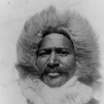 Most of the credit for being the first to reach the North Pole goes to Admiral Robert E. Peary, but some claim that he was actually second to his African-American assistant, MATTHEW HENSON. According to his 1947 account A Negro at the North Pole, Henson went on several of Peary’s expeditions and finally succeeded in reaching the pole 6 April 1909, just 45 minutes ahead of Peary. Henson, however, didn’t get the credit he deserved until the last years of his life. He died in 1955 and was buried at Woodlawn Cemetery in the Bronx, New York. At a special ceremony in 1988, on the 79th anniversary of his achievement, Henson and his wife (who had died in 1968) were reinterred in a special tomb next to Peary’s memorial at Arlington National Cemetery in Washington, D. C.
Most of the credit for being the first to reach the North Pole goes to Admiral Robert E. Peary, but some claim that he was actually second to his African-American assistant, MATTHEW HENSON. According to his 1947 account A Negro at the North Pole, Henson went on several of Peary’s expeditions and finally succeeded in reaching the pole 6 April 1909, just 45 minutes ahead of Peary. Henson, however, didn’t get the credit he deserved until the last years of his life. He died in 1955 and was buried at Woodlawn Cemetery in the Bronx, New York. At a special ceremony in 1988, on the 79th anniversary of his achievement, Henson and his wife (who had died in 1968) were reinterred in a special tomb next to Peary’s memorial at Arlington National Cemetery in Washington, D. C.
American Civil War general THOMAS J. “STONEWALL” JACKSON was not exhumed, but his left arm was. General Jackson was one of the most brilliant officers on the side of the Confederates, a former professor of artillery tactics at Virginia Military Institute and a distinguished veteran of the U. S. – Mexican War. Jackson was seriously wounded by his own men as he returned from the battlefield at Chancellorville, Virginia. His left arm was shot up and had to be amputated. The arm was spirited away by someone and buried in a nondescript grave near the site of the battle. Jackson was taken to a safer place to recuperate, but died eight days later and was taken to Lexington to be buried. In 1929 the arm was exhumed, placed in a small box (it had been wrapped in cloth) and reburied at the Ellwood Family Cemetery near Spotsylvania.
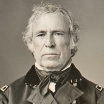 ZACHARY TAYLOR was the 12th president of the United States, and the second to die while in office. After only 16 months as President, “Old Rough and Ready” was downed by some sort of gastrointestinal illness. In 1991 Taylor’s body was exhumed to test for poison, but the results were negative.
ZACHARY TAYLOR was the 12th president of the United States, and the second to die while in office. After only 16 months as President, “Old Rough and Ready” was downed by some sort of gastrointestinal illness. In 1991 Taylor’s body was exhumed to test for poison, but the results were negative.
In 1809 MERIWETHER LEWIS was the governor of the Louisiana Territory, a post given to him as a reward for his successful expedition to the Pacific Ocean. He was on his way to Washington, D.C. — probably to get chewed out by the boss — when he died under mysterious circumstances in a Tennessee tavern. A request to exhume his body was rejected by the National Park Service in 1997, but William Anderson, a relative, and James Starrs, a professor from George Washington University, continue to try for permission to dig up Lewis’ remains.
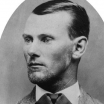 Professor James Starrs, a forensic specialist, was involved in the 1995 exhumation of legendary outlaw JESSE JAMES. The official story of Jesse’s death has always been that he was gunned down in 1882 by Bob Ford, a member of his gang. Locals sympathetic to the James legend, however, often maintained that Jesse faked his death and disappeared. DNA testing done after he was dug up proved that sure enough, the body in the box was Jesse James.
Professor James Starrs, a forensic specialist, was involved in the 1995 exhumation of legendary outlaw JESSE JAMES. The official story of Jesse’s death has always been that he was gunned down in 1882 by Bob Ford, a member of his gang. Locals sympathetic to the James legend, however, often maintained that Jesse faked his death and disappeared. DNA testing done after he was dug up proved that sure enough, the body in the box was Jesse James.
Along with the rest of his family, CZAR NICHOLAS II, the last emperor of Russia, was executed by the Bosheviks in 1918. The location of the bodies was unknown until the 1970s. In 1991 the bodies were exhumed and subsequent tests proved they were, in fact, the Romanovs, including Nicholas and his daughter, Anastasia.
French singer and movie star YVES MONTAND died in 1992. For years Aurore Drossart claimed she was Montand’s illegitimate love child. He went to his grave denying it, and refusing to take part in any DNA testing. In 1998 he was exhumed and tested anyway, and it was shown that poor old Yves was right after all. He was not Drossart’s father.
CONRAD VEIDT was at the height of his Hollywood movie career when he keeled over from a heart attack in 1943. And okay, he was never exhumed. He was never even buried, he was cremated. But Veidt’s remains were indeed given the runaround. His wife hung onto his ashes until her death in 1980, after which fans and family members kept track of them, looking for a permanent resting place. He was finally interred in London, England in April of 1998.
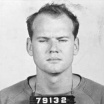 SAM SHEPPARD was convicted of killing his wife in 1954. He maintained his innocence, and the conviction was overturned in 1964. He was retried and acquitted in 1966, but by then his life was a shambles and he died within a few years. His son’s persistence led to Sheppard’s body being exhumed in 1997, in order to complete DNA testing that has given more creedence to Sheppard’s claims of innocence.
SAM SHEPPARD was convicted of killing his wife in 1954. He maintained his innocence, and the conviction was overturned in 1964. He was retried and acquitted in 1966, but by then his life was a shambles and he died within a few years. His son’s persistence led to Sheppard’s body being exhumed in 1997, in order to complete DNA testing that has given more creedence to Sheppard’s claims of innocence.
KENNEWICK MAN was buried 9,000 years ago or more, long before the invention of the funeral home. His remains were finally dug up along the Columbia River in the Pacific Northwest in 1996, discovered by a couple of dudes watching a boat show. Since then, his bones have been the subject of a legal tug-o-war between scientists, who want more science, and Native American tribes, who want more ancestors.
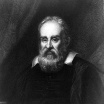 Since his death in 1642, GALILEO had been “resting” in a closet in part of a church in Santa Croce, having been condemned by the church for heretical beliefs. As a funeral bequest from one of his former assistants, a mausoleum was built and Galileo’s remains were moved there in 1737. Before they put him away for good, his right middle finger was removed and preserved for a museum display.
Since his death in 1642, GALILEO had been “resting” in a closet in part of a church in Santa Croce, having been condemned by the church for heretical beliefs. As a funeral bequest from one of his former assistants, a mausoleum was built and Galileo’s remains were moved there in 1737. Before they put him away for good, his right middle finger was removed and preserved for a museum display.
 The legend of Santa Claus has its origins in the stories surrounding ST. NICHOLAS, a 4th century bishop who became a saint of the Catholic Church. After his death, he was buried near his church at Myra and his grave served as a shrine for centuries. In 1087 his remains were stolen and taken to Bari, Italy, where they became enshrined, boosting Bari’s popularity as a site for pilgrimage.
The legend of Santa Claus has its origins in the stories surrounding ST. NICHOLAS, a 4th century bishop who became a saint of the Catholic Church. After his death, he was buried near his church at Myra and his grave served as a shrine for centuries. In 1087 his remains were stolen and taken to Bari, Italy, where they became enshrined, boosting Bari’s popularity as a site for pilgrimage.
CHECKERS the dog became famous in 1952 when his owner, Richard Nixon, spoke fondly of him in a speech to the nation. The speech saved the political career of Nixon, who later became the 37th president of the United States. Checkers died in 1964 and was buried in a pet cemetery in Long Island, New York. After Nixon’s 1994 death, rumors circulated that Checkers would be exhumed and reburied next to his master at Nixon’s presidential library in Yorba Linda, California. The rumors were untrue and Checkers remained in Long Island.
MICHIGAN J. FROG was the star of a 1955 Warner Brothers cartoon, a dancing and singing frog found in the concrete cornerstone of a demolished building. The cartoon character was inspired by an allegedly true 1928 incident in Eastland, Texas, where a 31-year-old cornerstone was unsealed and a live toad was found inside. That toad, known as “Old Rip,” was not known to sing or dance.
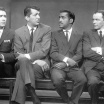 British actor PETER LAWFORD had a career of highs and lows. In the 1950s he married into the Kennedy clan and fell in with Frank Sinatra. In the first few years of the 1960s, Lawford hung out with Marilyn Monroe, the First Family and Sinatra and his Rat Pack in Las Vegas. Then it all fell apart, and when his career hit the skids he focused on vodka, painkillers and cocaine. When Lawford died in 1984 he was destitute, reduced to selling his own life story to the tabloids. More than three years after his ashes were entombed, it turned out nobody had ever ponied up for the cost of his burial. His children and his wife at the time, Patricia Seaton, couldn’t agree on who should pay for crypt maintenance, and on May 25, 1988 Seaton removed his ashes and scattered them at sea for a photo spread in The National Enquirer.
British actor PETER LAWFORD had a career of highs and lows. In the 1950s he married into the Kennedy clan and fell in with Frank Sinatra. In the first few years of the 1960s, Lawford hung out with Marilyn Monroe, the First Family and Sinatra and his Rat Pack in Las Vegas. Then it all fell apart, and when his career hit the skids he focused on vodka, painkillers and cocaine. When Lawford died in 1984 he was destitute, reduced to selling his own life story to the tabloids. More than three years after his ashes were entombed, it turned out nobody had ever ponied up for the cost of his burial. His children and his wife at the time, Patricia Seaton, couldn’t agree on who should pay for crypt maintenance, and on May 25, 1988 Seaton removed his ashes and scattered them at sea for a photo spread in The National Enquirer.
 Famous law enforcement agent ELIOT NESS wasn’t exactly exhumed — he was more like rediscovered. Ness was cremated, and, like Conrad Veidt, his ashes were ignored and untouchable for several years, stuck away in a box at the family home. In 1997, in a special ceremony honoring his contributions to the city of Cleveland, his ashes were scattered across an artificial lake, forty years after his death.
Famous law enforcement agent ELIOT NESS wasn’t exactly exhumed — he was more like rediscovered. Ness was cremated, and, like Conrad Veidt, his ashes were ignored and untouchable for several years, stuck away in a box at the family home. In 1997, in a special ceremony honoring his contributions to the city of Cleveland, his ashes were scattered across an artificial lake, forty years after his death.
 BETSY ROSS is known as the designer of the U. S. flag, a seamstress and upholsterer from Philadelphia, Pennsylvania. She died in 1836, but in 1857 she was reburied in a Quaker cemetary outside of Philadelphia. By the time of the U. S. bicentennial celebration in 1976, her former residence in Philadelphia was a popular tourist attraction, and her body was moved again, this time to Arch Street, near the Betsy Ross House, one of the city’s most-visited sites.
BETSY ROSS is known as the designer of the U. S. flag, a seamstress and upholsterer from Philadelphia, Pennsylvania. She died in 1836, but in 1857 she was reburied in a Quaker cemetary outside of Philadelphia. By the time of the U. S. bicentennial celebration in 1976, her former residence in Philadelphia was a popular tourist attraction, and her body was moved again, this time to Arch Street, near the Betsy Ross House, one of the city’s most-visited sites.
Another member of the twice-disinterred club is 19th century composer LUDWIG VAN BEETHOVEN. Beethoven, who died in 1827, was exhumed the first time in 1863, then reburied in a more secure casket inside a brick vault. On June 22, 1888 he was exhumed again from the Währinger Cemetery, measured and moved to the Central Cemetery in Vienna, Austria.
The great Lakota warrior and spiritual leader SITTING BULL was originally buried at Fort Yates, North Dakota in 1890. In 1953 his remains were moved to a site near where he had lived on the Standing Rock reservation, outside of Mobridge, South Dakota. As in the case of Abraham Lincoln‘s body, concrete was poured over his grave to protect it from vandals. Unfortunately, a granite monument placed at the scene has not escaped vandalism.
 The body of LEE HARVEY OSWALD, the man who assassinated President John F. Kennedy, was exhumed in 1981 for a look-see. Michael Eddowes, the author of The Oswald File, had a theory that there were two Oswalds, and he filed a lawsuit that forced the exhumation (with the okay of Oswald’s widow). On October 4, 1981 the grave in the Rose Hill Cemetery in Fort Worth, Texas was opened and the official word was that there was a lot of damage because of a leak in the casket, and the body was indeed Oswald’s. But the official version hasn’t stopped talk that the body had irregularities that only further the mystery of the Kennedy assassination.
The body of LEE HARVEY OSWALD, the man who assassinated President John F. Kennedy, was exhumed in 1981 for a look-see. Michael Eddowes, the author of The Oswald File, had a theory that there were two Oswalds, and he filed a lawsuit that forced the exhumation (with the okay of Oswald’s widow). On October 4, 1981 the grave in the Rose Hill Cemetery in Fort Worth, Texas was opened and the official word was that there was a lot of damage because of a leak in the casket, and the body was indeed Oswald’s. But the official version hasn’t stopped talk that the body had irregularities that only further the mystery of the Kennedy assassination.
In 1894, about 144 years after JOHANN SEBASTIAN BACH was buried in Leipzig, the expansion of the Johanneskirche graveyard provided an opportunity to confirm the precise location of his grave, which had never been marked. The local authorities ordered an exhumation to determine which body was his, already having some clues to go on. They dug up the likely candidates and eventually concluded which one was him and commissioned a sculptor to reconstruct his face (using his skull as a model). Then they compared the sculpture to the only known official portrait of Bach and decided once and for all that they had the right corpse. His body was reburied in the Thomaskirche in Leipzig, this time with a headstone and a well-marked grave.
 Movie star and icon MARIA FELIX made her mark in Mexican cinema in the 1940s. Often called “the Marilyn Monroe of Mexico,” Felix was known for her sultry and strong personality, and for fifty years she captivated the public with her screen performances as well as her highly publicized love life. “La Doña,” as she was known, died on 8 April 2002, her 88th birthday. The cause of death was officially said to be a heart attack, but her brother cried foul, claiming he was not able to view her body after she died. On 29 August 2002 she was exhumed, and about a week later the press reported that she had died of natural causes. Felix also appears in our loopPossibly Poisoned.
Movie star and icon MARIA FELIX made her mark in Mexican cinema in the 1940s. Often called “the Marilyn Monroe of Mexico,” Felix was known for her sultry and strong personality, and for fifty years she captivated the public with her screen performances as well as her highly publicized love life. “La Doña,” as she was known, died on 8 April 2002, her 88th birthday. The cause of death was officially said to be a heart attack, but her brother cried foul, claiming he was not able to view her body after she died. On 29 August 2002 she was exhumed, and about a week later the press reported that she had died of natural causes. Felix also appears in our loopPossibly Poisoned.
A fate resembling exhumation, but more exciting, befell LAZARUS OF BETHANY, according to the book of John, one of the Christian Bible’s four Gospels. A friend and follower of Jesus of Nazareth, Lazarus had been dead for four days when Jesus arrived in Bethany. Greatly moved, Jesus called Lazarus to come out of his tomb. Miraculously, Lazarus did just that, still wrapped in burial cloths. “Unbind him and let him go,” Jesus said. It’s about the last that was seen of Lazarus in the Bible, though apocryphal Christian legends have him showing up in various lands years later – and eventually dying permanently. Ancient and medieval churches in France and Constantinople both claimed to have his bones at one time.
